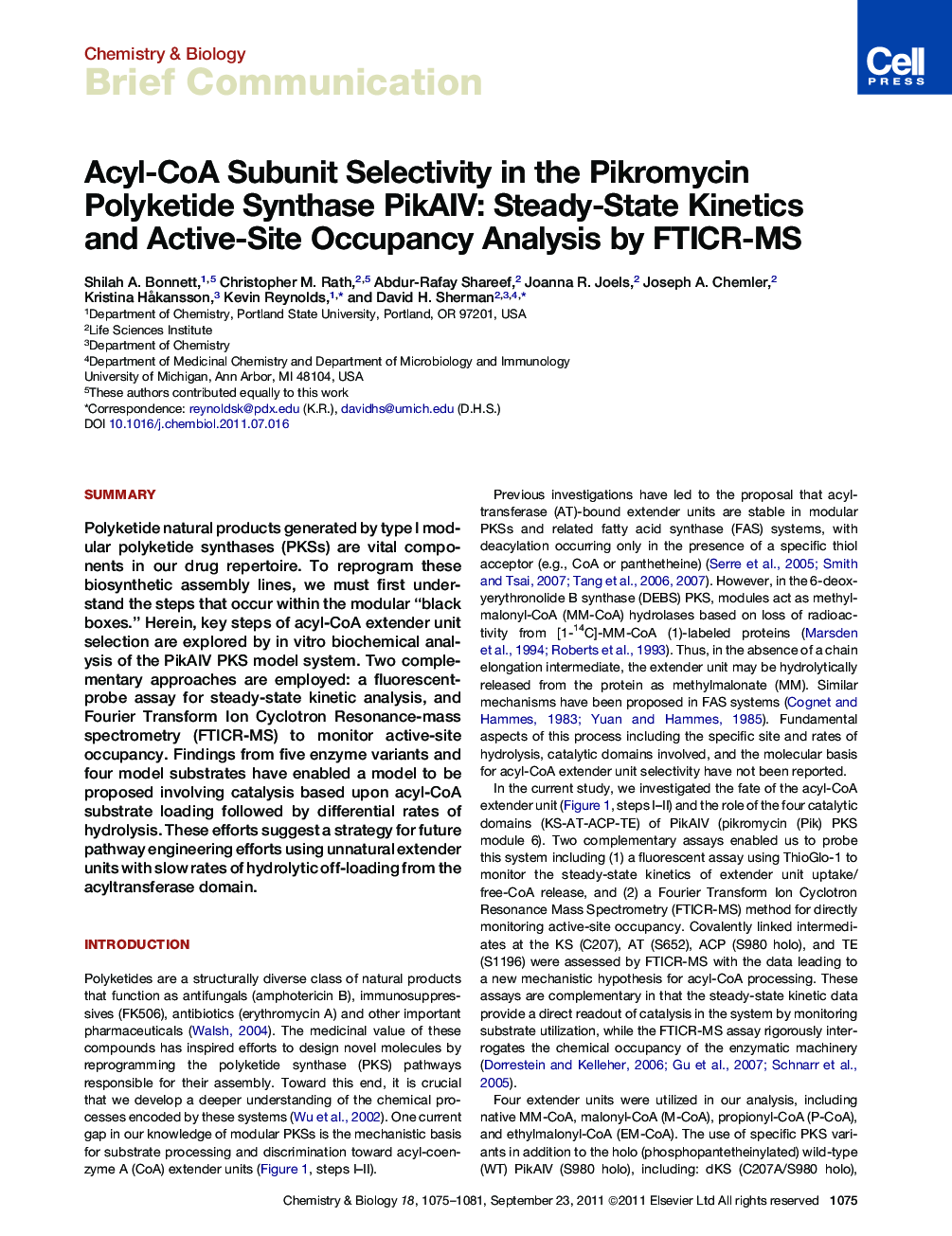| Article ID | Journal | Published Year | Pages | File Type |
|---|---|---|---|---|
| 1391386 | Chemistry & Biology | 2011 | 7 Pages |
SummaryPolyketide natural products generated by type I modular polyketide synthases (PKSs) are vital components in our drug repertoire. To reprogram these biosynthetic assembly lines, we must first understand the steps that occur within the modular “black boxes.” Herein, key steps of acyl-CoA extender unit selection are explored by in vitro biochemical analysis of the PikAIV PKS model system. Two complementary approaches are employed: a fluorescent-probe assay for steady-state kinetic analysis, and Fourier Transform Ion Cyclotron Resonance-mass spectrometry (FTICR-MS) to monitor active-site occupancy. Findings from five enzyme variants and four model substrates have enabled a model to be proposed involving catalysis based upon acyl-CoA substrate loading followed by differential rates of hydrolysis. These efforts suggest a strategy for future pathway engineering efforts using unnatural extender units with slow rates of hydrolytic off-loading from the acyltransferase domain.
► A new model for CoA-extender unit selection in type I PKSs was developed based on differential rates of extender unit AT domain hydrolysis ► FTICR mass spectrometry enabled PKS active-site occupancy to be determined ► A complementary fluorescent reporter assay enabled steady-state kinetic analysis to be performed ► Results of acyl-CoA extender unit substrate specificity studies were applied to generate a new macrolactone from an unnatural ethylmalonyl-CoA extender unit
